Situated in west Ehime is the castle city of Japan, Ozu. Built during the Edo Period and referred to as Little Kyoto, this city gives off a nostalgic vibe straight out from history. Less than an hour’s train ride from Matsuyama, Ozu can be the perfect vacation town for you!
Table of Contents
Introduction to Ozu

Historical Background
Located in Uwa-gun of the province of Iyo, the Ozu Region began having inhabitants in 10,000 BC. It was during this time that megaliths such as the Menhir (standing stone) in Takayama were built. During the Kamakura Period, the Otsu Jizotake castle was established by Toyofusa Utsunomiya who was hailed as the ruler of the Ozu Region and the Iyo Province’s guardian. The modernization of the Ozu Castle and construction of the town division of modern castles started during the 1595 by Katsutaka Toda up until the Meiji Period.
※ Ozu City, "History"
Geography and Population
Part of the western Ehime Prefecture, Ozu City, otherwise known as the Little Kyoto of Iyo is located by the Hijikawa River that streams and courses through its city center. With both a combination of tall green mountains and ancient architectural structures of the Edo and Meiji Period, Ozu City brings about nostalgia and reminiscence of nature and the past. The city is home to 19,835 households and 42,655 people as of 31 January 2021.
※ Ozu City, "City Profile"
Writer's Pick
A Glimpse of the City
Paint the beauty of Ozu in your minds with the different nostalgic attractions it has to offer. Each site has their own distinct portrayal of the past.
Ozu Castle: Heart of the City
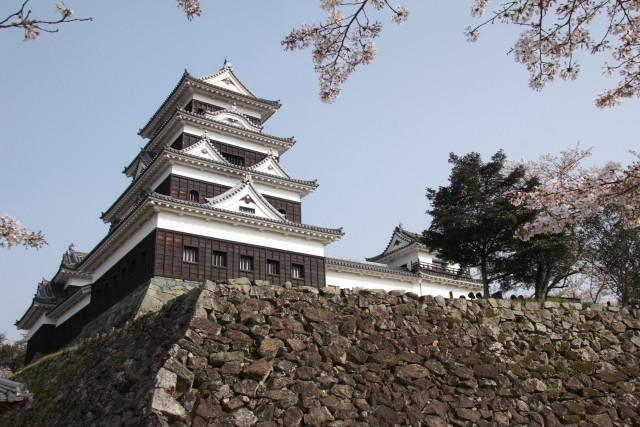
Ozu Castle, the icon of the city, was built during the Kamakura Period by Toyofusa Utsunomiya and was once called Otsu, meaning port. Throughout the years, the castle towers were destroyed and ruined by natural and manmade disasters. Restoration of the castle started in 1994 and was finally completed in 2004. Exhibitions on the city’s history, geographical maps from the past, former castle models, as well as armour from past feudal lords and samurais are available in the castle.
Access: 6-mins walk from Masugata Bus Station or Sannomaru Bus Station
Entrance Fee: 550 yen (Adult)
※ Ozu Castle, "History / History" ※ Ozu Castle, "Restoration of the castle tower"
TIP
Save 220 yen with a 880 yen shared pass to Ozu Castle and Garyu Sanso
A Walk in Tomisuyama Park
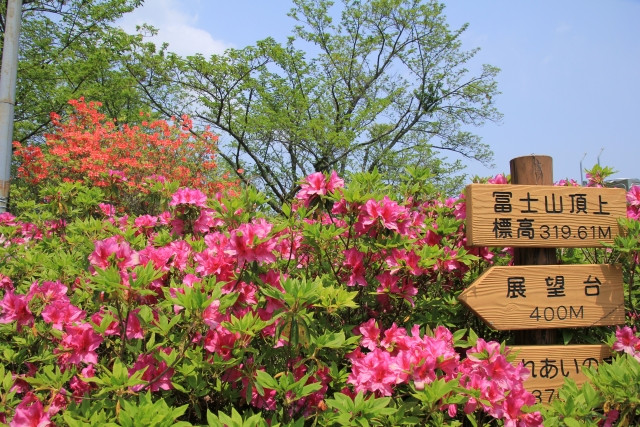
Tomisuyama Park is a haven of azalea flowers. An approximate of 63,000 azalea flowers bloom beautifully during golden week at the end of April until early May. In addition to enticing flowers, the entirety of Ozu Basin and Hijikawa River presents a picturesque sight when standing at the top of the mountain. The kanji for Tomisuyama (冨士山) is written similarly with the kanji of Mt. Fuji (富士山) as the mountain park bears resemblance with the popular Mt. Fuji.
Access: Easiest access is by car.
※ Ozu City, "Fujiyama Park"
Discover Akarenga-kan
A red-bricked English styled building amongst the Japanese styled wood and plaster buildings in Ozu City, the Akarenga-kan which was once a bank is now considered to be the icon of early Western culture in Japan. Exhibits and a museum of vintage bricks, old movie cameras, and model trains are installed in its rooms which visitors can look around. Tourists can visit the ground floor of Akarenga-kan for souvenirs such as handmade accessories, candles, ceramics, pictures, and the like.
Access:
-
3-mins walk from Ozu-Honmachi Bus Station
-
10-mins walk from Ozu Castle
Entrance Fee: 200 yen (Adult) for Annex. Building
※ Ozu City, "Ozu Redbrick Hall"
Witness Ukai or Cormorant Fishing
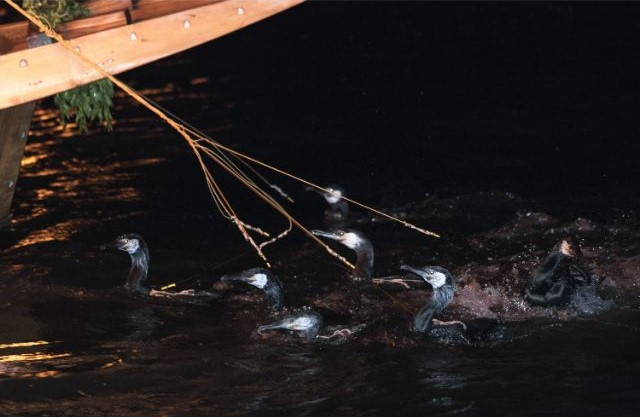
A different yet thrilling way to experience historic Ozu is Ukai Cormorant Fishing, a traditional method of fishing. It involves precise control of cormorant birds by fishermen from a long wooden boat in late evenings. Fish that have been caught by cormorants are stored in their throat poaches and brought back to the fishermen. Dine on freshly caught fish as you enjoy the cooling breeze aboard the boat with performances by the cormorants and their keepers. Ukai or Cormorant Fishing is best experienced from the 1st of June to the 20th of September.
※ Ozu City, "Ozu Fushikaden," p.9
Check the Antique Street Market of Pokopen Yokocho
Pokopen Yokocho is a small area stuck in the past. This is a district market that embodies the 1950s and 1960s. It is packed with stores and booths where tourists can indulge themselves with foods, old toys like spinning tops, stilts, and hula hoops. Its Omoide Soko holds items from the Showa Period. Antiqued toys and enamel signs can be bought as souvenirs here.
Access: 4-mins walk from Ozu-Honmachi Bus Station
※ Pokopen Yokocho
Nyoho-Ji
Reminisce on the creed of the past by visiting Nyoho-Ji which was the sanctuary of Buddhism in Ozu City. Once a grand temple ground, the entirety of Nyoho-Ji was razed to the ground except for the Buddha Hall. Some but not all of the buildings were rebuilt to make up Nyoho-Ji as it is today. The original Buddha Hall holds an altar called Shumidan where an image of Buddha is kept. The hall serves as a sacred area for monks to pray and practice Zen meditation. Statues of Yotaku Bankei and Yasuoki Kato can also be spotted on either side of the platform behind the Buddha Hall. Centuries old camellia trees that bear beautiful flowers line the front garden entrance of the temple. Visit in February and April to witness the camellia flowers bloom.
Access:
-
25-mins walk from Watashi-Baguchi Bus Station
-
24-mins walk from Garyu Sanso
※ Ozu City, "Nyohoji Buddha Hall"
Restaurants and Tea Houses
Dining in different restaurants and tea houses is the best way to experience the city. Envelop yourself not just with the sights and sounds of a bygone era but with its flavours as well.
Ozu Robata
Ozu Robata Restaurant serves Japanese staple foods like okonomiyaki, teppanyaki, and robatayaki. Their foods are meticulously made with ingredients generally found in Ozu City. Tonkuri Mabushi is their specialty, a local pork and chestnut dish oozing with earthy nutty flavours that combine with juicy salty pork. A must try for Ozu visitors. The sake is also locally produced.
Motsu Nabe Izakaya Netsuen
This restaurant is famous for their local specialty Ozu Croquettes. A unique dish created from the idea of being able to serve Imotaki (another Ozu specialty) all year round in the form of a croquette. Only a few stores in Ozu sell this so don’t miss out!
The restaurant is also famous for Motsu Nabe, a classic hot pot dish of beef or pork innards in a miso or soy sauce based soup together with some vegetables and tofu. Visit their facebook page for more details or check the restaurant here.
Garyu Sansu
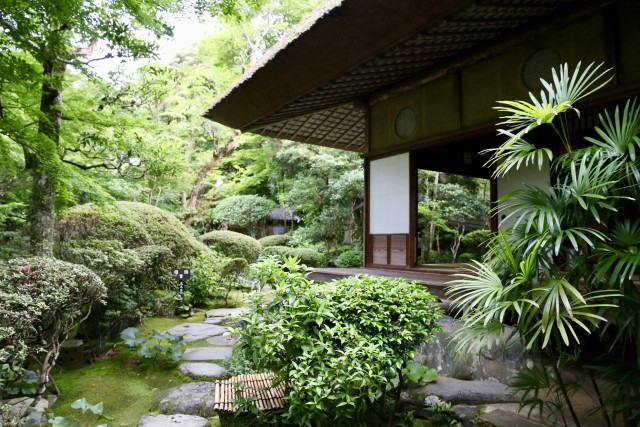
One of the top historical sites in Ozu, Garyu Sanso is the place to experience nature and refreshing tea at the same time. Built in the early 1900s, Garyu Sanso is a villa overlooking the serene Hiji River. The entire villa consists of 3 buildings - Garyuin, Chishian, and Furuan, each having its own unique design and characteristics:
- Garyuin is the main building with a thatched roof design and spacious tatami tea rooms,
- Chishian is a small tiled roof tea house, and
- Furuan is a wooden thatched roof tea house with a simple design.
The tea houses are laid around a large garden with stepping stones and rare moss plants.
Entrance Fee: 550 yen or 880 yen for shared pass with Ozu Castle
※Garyu Sanso
Café ZU-OO
Café ZU-OO is Ozu’s old folk house café that serves traditional pastries, desserts, soups, fresh salads, sandwiches, coffees, and teas which depicts the taste of aged years. Its antiqued design sets the mood and aesthetic of the vintage nostalgia of Ozu City.
Getting to Ozu
The best route to Ozu is through Matsuyama City which is easily reached via Shinkansen.
Matsuyama to Ozu Train Ride
Once you’ve arrived in Matsuyama, take a train on the Yosan Line to Ozu. The train ride is about 40 minutes and stops at Iyo-Ozu Station where you can easily get to the various attractions.
※ Japan National Tourism Organization, "Ozu"
Summary
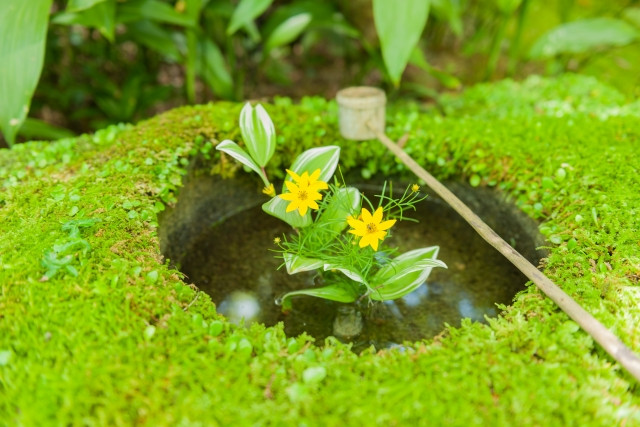
The best part of travelling is to engulf oneself in the history, customs, and culture of a place. In Little Kyoto Ozu, you can see how life in the city was back during the Edo Period. History, nature, and local delicacies, a visit to Ozu is one you will not regret.































